Chongqing Humanistic Picture | Ba Jiao Village's Reading Fragrance Through the Deep Texture of the Mountain City

Every outsider will be amazed by the terrain here when they first enter Chongqing: skyscrapers grow layer by layer along the mountains of Jialing River and Yangtze River, reaching straight into the sky; The bridges on the river and the overpasses on land crisscross and spiral upwards, creating a stunning yet unique scenery; The light rail of Liziba passes through the building, running all the way on the river and by the mountain, full of vitality
This is a city built on a mountain, or in other words, the entire city is a mountain.
On the mountain is the city, and below the mountain is also the city.

The urban builders of Chongqing in the past, in order to make the buildings conform to the urban terrain and adapt to local conditions as much as possible, distributed all the infrastructure belonging to the city, such as buildings, commerce, transportation, and life, in various positions up and down the mountain. Therefore, there was the upper half of the city and the lower half of the city. Today, this has become the source of the name of the 8D city in Chongqing.
8D is the shape of a mountain city, and a charming and graceful city must have a harmonious and integrated form and spirit. This' god 'refers to the culture and intricate daily life of this place.

The Shancheng Trail was a living pathway that connected the mountains and the foothills back then. Experience the culture of Chongqing's mother city, daily life, and hiking trails. This is a must visit destination for tourists from other places.
Among the numerous trails, several home garden trails are quite representative, coexisting with the hustle and bustle of the city and the fragrance of books.
Bajiao Village is right here.
The Zhangjia Garden Mountain City Trail is part of the third trail of the mountain city, named after Zhangjia Garden, which was first built during the Republic of China period.
The mountain city trail is rugged and winding, and if you choose to descend from the mountaintop, it may appear hurried. Therefore, to explore the mysteries of the mountain city, it is recommended that you climb up the steps. Perhaps when you stop and rest, you may accidentally sink into the deep texture of this city.

Stepping out of Daxigou Station on Metro Line 2, you can easily find the entrance to the Zhangjiahuayuan Mountain City Trail as you grope your way into Renhe Street.
The trail is not straight, with walls made of green bricks and joints made of white plaster. Large stone staircases extend up or down to various corners - these are full of surprises. Almost every turn, different landscapes appear in front of you.

This is the most typical living area in Chongqing, with various residential buildings standing on both sides of the trail. The mottled walls and shapes of the buildings can clearly indicate the nature of the old community here.
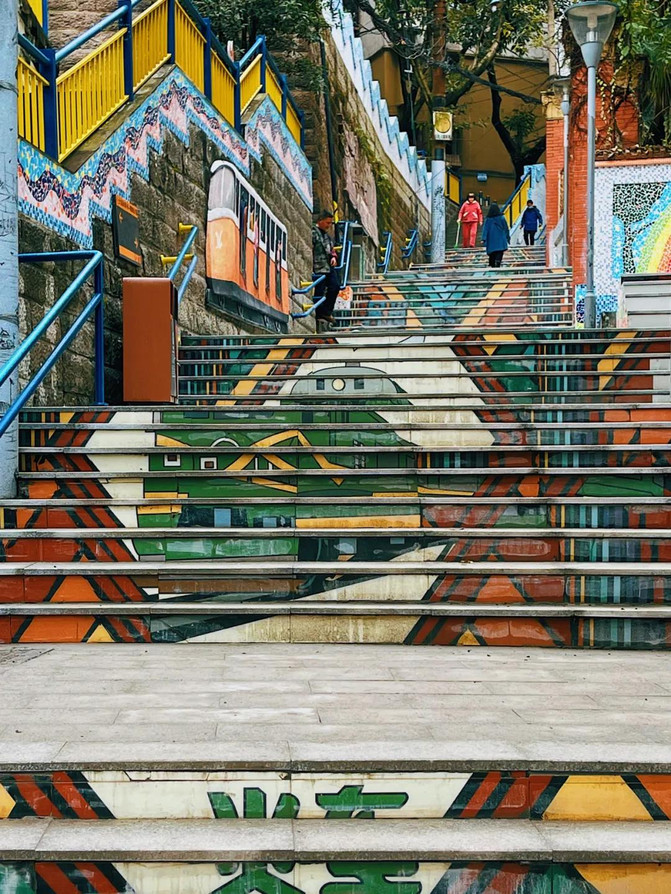
Occasionally, there is a small pedestrian bridge that leads from the trail into the nearby residential building. Along the fence built along the trail, there are occasionally a few dark red benches inserted for visitors or citizens walking on the trail to rest.
The most local flavor in Chongqing's texture appears before us with a fragrance of books.
Stop walking, pick up the unique small slope of Chongqing, and walk to the entrance of Zhangjia Garden Tunnel. You see a relief wall rushing towards you - Bajiao Village has arrived.
The starting point of modern education in Chongqing has arrived.

02 Walking into Bajiao Village, Chongqing Education Highland
The so-called Bajiao Village, also known as Bajiao Village Education and Culture Block, is not only the deepest fold of Chongqing's urban fabric, but also the place where profound inscriptions have been left in the entire history of Chongqing and even the whole country. It is also the starting point of Chongqing's modern and contemporary cultural context.
It is not an exaggeration to say that this is the cultural capital of Chongqing.

Panoramic View of Bashu School from Dongshan Slope
This is the glory and accumulation that began in the 1920s and 1930s, and nearly a century of time has endowed this place with a brilliant chapter in both the history of Chinese education and the history of the Chinese revolution.
The cultural block of Bajiao Village is connected to Zhongshan 2nd Road on Renhe Street by Zhangjiahuayuan Trail, covering five schools including Zhangjiahuayuan Community, Huafu Lane Community, Renhe Street Community, Lianglukou Street Zhong'er Road Community, and Bashu Primary School radiating from Daxigou Street. With kindergartens, primary and secondary schools, it is scattered and crisscrossed, and the fragrance of books permeates.
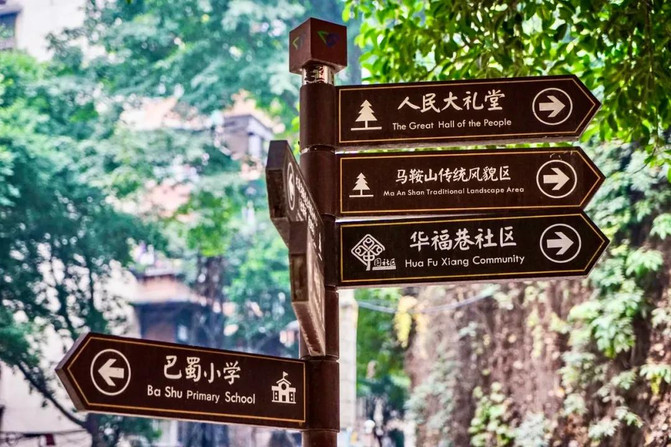
Undoubtedly, this is the highland of Chongqing's educational history, without a doubt.
The cultural street, cultural wall, and "Bashu Education, Culture, and History Exhibition Hall" of Bashu Elementary School are the core parts that Bashu Village cannot avoid. They present the school history of Bashu at that time and the historical events that occurred in this area.
On the relief sculpture at the entrance of Zhangjiahuayuan Tunnel, Mr. Huang Yanpei, the founder of the Bashu Primary School ideology, Mr. Zhou Xucheng, the first principal of Bashu Primary School, as well as revolutionary educator Mr. Wu Yuzhang, revolutionary martyr Jiang Zhuyun, famous writer Yang Hansheng and other predecessors, are the founders of the scholarly atmosphere of Zhangjiahuayuan Mountain City Trail.


03 The passion and anger of Bajiao Village amidst the raging war
On November 20, 1937, the Nationalist Government issued the "Declaration on Relocating the Capital to Chongqing". Subsequently, Chongqing became the wartime capital, which opened another track for the development of Chongqing's culture and education.
On the trail, at No. 65 Zhangjia Garden, there is a courtyard gate made of blue bricks that is very eye-catching. Above the lintel are two traditional Chinese characters: "Yuyuan". This is one of the earliest school properties established by Bashu Elementary School.
In September 1938, the "Literary Association" also moved to Chongqing and rented a place in the "Yuyuan" of Bashu School, which became the location of the National Association of Literary and Art Circles Against the Enemy in China.
Whenever the "Literary Association" holds a meeting, Mao Dun, Lao She, Ge Baoquan, Zhou Erfu, Hu Sheng, Ge Mao, Guo Moruo, Zhang Daofan, Wang Pingling, Hualin, Yang Hansheng, Xia Yan, Feng Naichao, He Qifang, Liu Baiyu and others will gather here.

The former gate of Bashu School
Through the door of "Yuyuan", Lao She, dressed in long robes, and Bing Xin, wearing cheongsam, once gathered elites in the national literary and artistic circles such as Mao Dun, Ba Jin, Hu Feng, Zhu Ziqing, Ding Ling, and Tian Han.
At that time, Bashu Primary School was the center of literature and art in the country, and the center of national anti Japanese propaganda activities. It played an indelible role in the propaganda of inspiring national courage in the anti Japanese war, even in the establishment of the patriotic united front, together with the Zhangjia Garden Orphanage on the path of Zhangjia Garden Mountain City, and the "Sino French School", the first cadre training school of the CPC in Chongqing.
At that time, the location of Ba Jiao Village was no longer just the sound of reading, but also filled with passion and anger.

Nowadays, only a mottled old wooden door remains here for future generations to stop and reminisce.
This is the calm after the waves of history.
04 Bashu Elementary School integrates the philosophy of "doing"
Across from the relief wall at the entrance of Zhangjiahuayuan Tunnel is Bashu Elementary School, which was formerly known as the "Chongqing Private Bashu Elementary School".
This place is not narrow. The cultural street, cultural wall, and the "Bashu Education, Culture, and History Exhibition Hall" enclose it into a small square. There are many circular rest chairs standing on the square, surrounded by green trees, clear bird songs in the air, and the sound of books echoing in the campus. Occasionally, there are laughter and cheers calling for friends and companions, which makes it difficult to recall the iron blood and struggle against suffering here in the past.
The "Bashu Education, Culture and History Exhibition Hall" is located at the entrance of Bashu Elementary School.
Entering, one enters history.
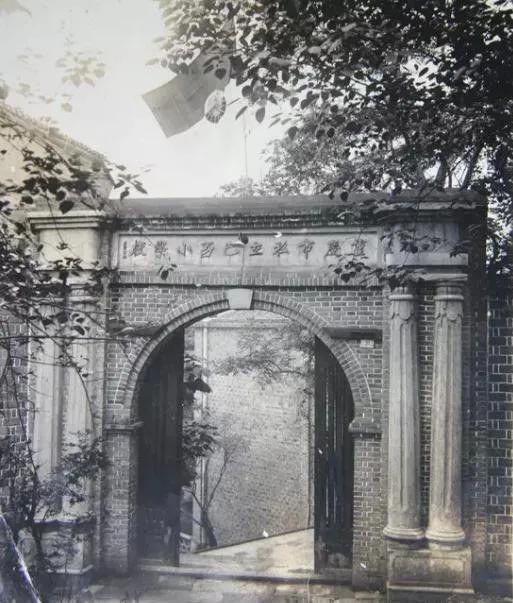
Chongqing Private Bashu Primary School Information Map
In 1932, Mr. Wang Zuanxu, former Chairman of Sichuan Province of the Nationalist Government, built the "Chongqing Private Bashu Primary School" (renamed "Chongqing Private Bashu School" in 1933) in Zhangjia Garden, Yuzhong District, Chongqing, and publicly issued the "Chongqing Private Bashu Primary School Declaration".
The Declaration states: Create a new school environment and experiment with some new primary education.

The transformation of culture and education was the theme of China at that time and also the main melody of the world. In the 20th century, philosophers such as Dewey's pragmatic educational ideas, Kepler's design teaching method, and Parkhurst's Dalton system had a huge impact on the educational reform at that time.
Dewey proposed life education theories such as "education is life", "school is society", and "integration of teaching and practice". His most famous student in China, Mr. Hu Shi, once said, "Study more problems and talk less about ideology," which is a manifestation of this ideology.
During the May Fourth New Culture Movement, these Western progressive educational ideas were introduced to China, and the private Bashu schools in Chongqing at that time, now known as Bashu Primary Schools, were the products of this educational trend.

It is thanks to Huang Yanpei, a famous educator in modern China and founder of the Democratic National Construction Association. In the establishment of Bashu School, his educational ideas of "sacred labor", "omnipotence of both hands", "combination of hands and brain", and "integration of work and learning" have forged the soul of the school.
At the beginning of its establishment, the philosophy of "doing" was integrated into the bone marrow of Bashu School, and Bashu School also became involved in the turbulence of world education reform as a result.
The educational philosophy emphasized by Huang Yanpei in the declaration is "the mind is scientific, and the skills are labor". And around this concept, a "triple life" centered around students has been proposed, adopting the educational principles of "educating and using both hands and brains" for students.
You should know that it was still an era where private schools were the mainstay of education. Even though there were some embryonic forms of modern education, they were mostly initiated by missionaries from abroad. Modern schools proposed and implemented entirely by Chinese people were rare in that historical period, although not unique in the country.
Especially for Chongqing, an inland port city, this is revolutionary and disruptive; In this sense, starting from Bashu Primary School in Bajiao Village, modern education in Chongqing was initiated.
There is a big yellow oak tree in front of the teaching building on the north side of the original Bashu School, and the northern end is a vocational classroom
The ground floor is a music room, the second floor is a laboratory, and the third floor is an art room

The two founders of Bashu Elementary School: Principal Zhou Xucheng on the left and Director Sun Bocai on the right
In just a few years, Bashu School has become the experimental center for primary education in eastern Sichuan, and has also become one of the top schools in Sichuan Province and even the whole country. In October 1937, Lin Sen, the President of the Nationalist Government, learned about the academic performance of Bashu Elementary School and wrote the words "remarkable achievements" in praise.


Teacher's Office of Bashu School in 1950
Nowadays, Bashu Primary School, Bashu Middle School, Bashu Kindergarten, Renhe Street Primary School, No. 42 Middle School... With Bajiao Village as the core, this small area has become a highland of basic education in Chongqing.
In the well of the city, the fragrance of books lingers.
In 1914, philanthropists from the Chongqing Historical Celebrity Hall founded Chongqing's first modern private orphanage on the mountain trail here. Jiang Jie (Jiang Zhuyun) was influenced by progressive ideas in the private orphanage and embarked on the path of revolution.

The earliest kindergarten in Bashu, in 1938, children took a photo with Teacher Yao Junyi
The ancient site of "Sino French School" is of great significance to the CPC. This is the first cadre training school of the CPC in Chongqing, and also the birthplace of CPC Chongqing Branch, the earliest party organization in Chongqing. It was founded by Mr. Wu Yuzhang in 1925.
On September 29, 1940, Premier Zhou Enlai delivered a speech titled "The International Situation and China's Resistance War" on the open-air playground of Bashu School, which became known as the famous "Nine Questions on the Resistance War".
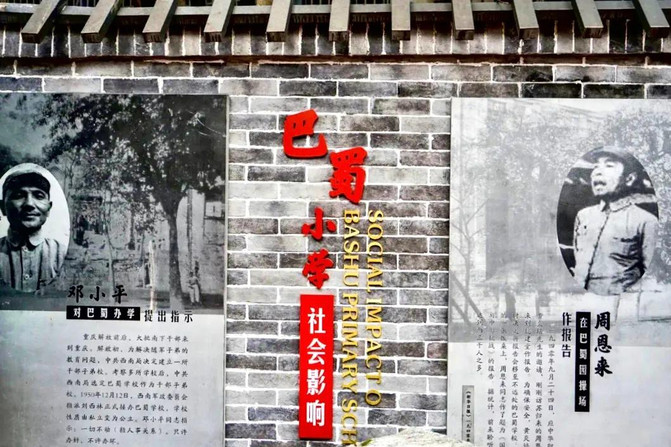

The stone steps outside the long corridor lead to the main road, and the thatched pavilion on the bridge opening faces the playground to the east
The speech was attended by over 3000 people, including military personnel, workers, businessmen, students, and other social elites as well as individuals with a sense of social responsibility. Premier Zhou Enlai raised nine questions and answers regarding the international situation and China's resistance against Japan, addressing the confusion of the people in the rear areas regarding the resistance against Japan, cooperation between the Kuomintang and the Communist Party, and the international situation.
The speech lasted for three and a half hours and ended with one sentence: "Unite as one to deal with the enemy, unity is no problem, victory will definitely be ours
extremely elegant and valuable.
Only local affairs are familiar to the ears and seen in daily life. Although there are discussions in the streets and alleys, every mountain, every water, every tree, and every stone that is usually used for children's play, once guided, becomes knowledge. There is no more fascinating method than this
Human resources and natural resources are all precious treasures of love, and local customs are the starting point of learning. Education and life are no different.
The trail is a place for sightseeing, and due to the preservation of its original function, it belongs even more to the living area of Yuzhong. Being on these historic mountain trails and Ba Jiao Village, you can truly feel the connection of time.

The community environment and living facilities around Bajiao Village are very complete. Along the trail, there are kindergartens, nursing homes, vegetable markets, braised food shops, and even cotton picking and locksmith shops that are difficult to see outside... The residents are peaceful, calm, and composed, with a contented expression, walking slowly and feeling calm inside.
For tourists, these are just roads, the appearance of Chongqing 8D. But for the residents here, it is a place of life, a place of learning, a lifetime, and a place of spiritual sustenance.
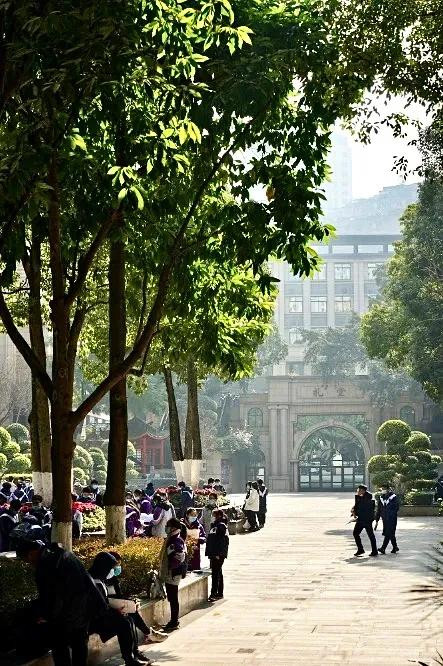
Some people see the Mountain City Trail as a negative film of Yuzhong, a microcosm of Chongqing's mother city culture. As for this family garden trail, they say that on this trail, one can see stubbornness, hard work, perseverance, and fireworks.
And the fragrance of books lingers in Bajiao Village.
We cherish the old in life, and education needs to be reformed.
At the current gate of Bashu Primary School, the Bashu Education, Culture, and History Exhibition Hall has been completed and opened, displaying the rich historical records and glory of Bashu Primary School. Walking out of the gate, on the mountain trail of Zhangjia Garden, the construction and renovation of the Bashu Education and Culture Street area have been completed.

This is a block full of the fragrance of books, with a hundred years of historical and cultural accumulation. It is also the deepest texture of Chongqing's mother city, Yuzhong. On the bluestone, the story of Bashu Elementary School is engraved, and it records the storms it has experienced in the past century - from the founding, the Anti Japanese War, the liberation, the reform and opening up, to the new millennium... Every time point carries the deepest love of Bashu people for Bashu Elementary School.
In the future, the senior students of Bashu Elementary School will continue to lead their newly arrived younger siblings on this cultural street, telling them the story and history of this school, its weight and glory, as well as the glory and dreams shared by all Bashu people.

Whether it is the Bashu School since 1933, the Bashu Primary School after the branch school in 1954, or the Bashu Primary School after the curriculum reform, they have stood at the crossroads of the times countless times, changing along with the process of history. The only thing that has not changed is Bashu's unwavering commitment to boxing education for its students and its consistent obsession with teaching and educating.
With nearly a century of accumulation and countless iterations of educational methods over time, this is the confidence and foundation of Bashu Elementary School. It is precisely because of this that countless honors and awards are frequently placed in the honor room of Bashu Elementary School. From receiving the Panama Gold Award on behalf of the Ministry of Education in 1938 to winning the National Education Achievement Award for "Discipline+" in 2018, every certificate or trophy embodies the hard work and sweat of every Bashu person.

In fact, the biggest achievements of Bashu Primary School in the past century are not limited to this. The students who study, learn, and graduate here are its most precious wealth - Zou Jiahua, Lu Guoji, Yin Jicheng, Zhang Cunhao, Wu Jinglian, Wang Xiaotang... The names that are popular among people, as well as the unknown Bashu graduates, are all important forces supporting the construction of our great country.
It can be foreseen that the education in Bajiao Village will never stop in the future, and their pursuit of education will never stop.
Up and down the stairs, the ink fragrance lingers.
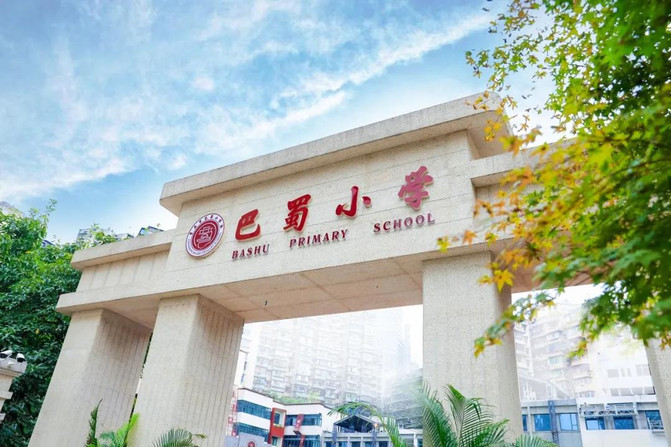
Perhaps at some point in the future, people will once again reminisce and praise Bajiao Village like we do, counting down the seeds of hope planted by the people of Bashu at this moment.
These seeds of hope will take root and sprout in Chongqing, China, and the world in the future, growing into towering trees that shelter and bless the world.
Previous Article:I don't know where to go during National Day, but the area around Chongqing is worth a visit
